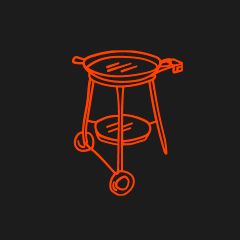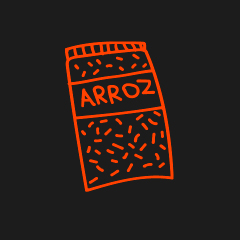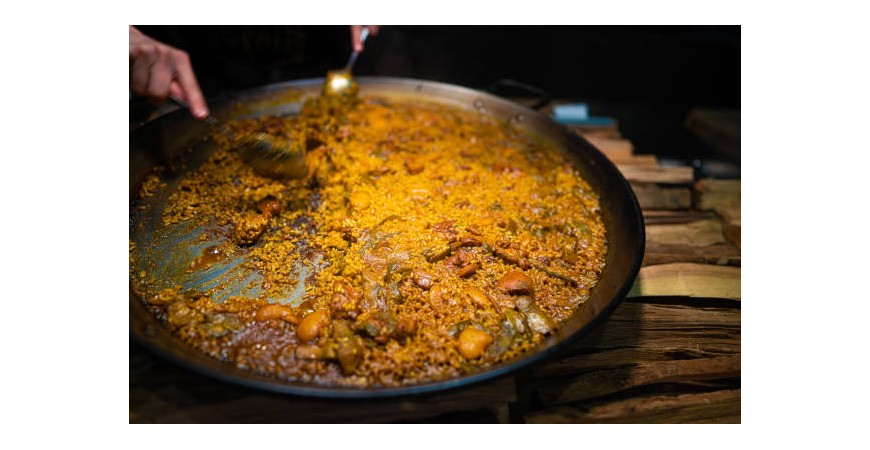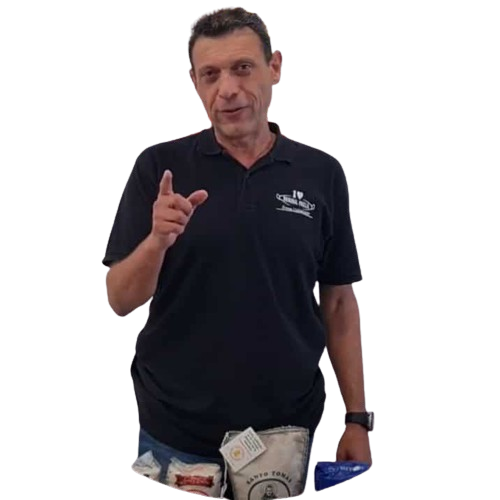The most common mistakes when making paella
When you start cooking, it is normal to make the odd mistake, such as miscalculating the quantity and ending up with extra food to feed your neighbor and his family, or perhaps miscalculating the cooking time and causing the golden color of your dish. be more of a carbon black.
We learn from mistakes and experience makes teachers, but there is no doubt that, if we can avoid it, we would prefer that everything turns out right the first time.
In this blog post we have compiled some of the most common mistakes that we have observed in future rice masters, to help you on your path to constantly making delicious paellas.
The sauce for paella is made only with the internal fire and over low heat
From our own experience, we have seen many beginner cooks not only burn their sofrito, but even bulge their paella by overdoing it with the power of the fire when they are making it.
To prevent this from happening to you, we recommend that you use the interior heat of your paella pan at medium or low power to make the stir-fry.
The secret to a good stir-fry is to fry the meat well over low heat. This will cause the fats and flavors of the fat-soluble meat to melt with the frying oil. Later, when we add the water, this oil will not mix with the water. (not mixable) will float on top of it, when we add the rice, the water will partly evaporate and partly will be absorbed by the rice.
As the water level decreases, the floating oil will coat the rice grains and give it the desired palatability, which is what truly makes our rice tasty. It is also important that our paella has the right amount of oil (25/30 ml per person) since this oil that covers the grains has to be enough to reach the base of the paella when there is no more broth left, because this excess oil will be responsible for frying the layer of rice at the base, browning its grains and obtaining the appreciated socarrat.
When you have your sauce ready and add the water, then feel free to turn on the other rings of the paella pan.
Even so, keep in mind that water boils at 100 degrees, so if you increase the heat, this extra heat will not produce an increase in temperature, but rather it will be transferred, increasing the evaporation of the water/broth. The master paella maker, due to his experience, knows how to identify when the rice is cooked, from there he will increase the power of the fire to evaporate more broth and vice versa.
Traditionally, the first 8 to 10 minutes over high heat and the remaining 8 minutes over low heat have been used as a common technique. With this strategy we make sure that during the first 10 minutes we evaporate the excess broth until the rice "pops out" (it appears see the grain of rice above the broth) and in the following minutes the rice is finished cooking with less broth and over low heat.
Don't lack water, but don't overdo it either.
Water is an essential ingredient, it is what allows us to convert our sauce into broth and which is later absorbed by the rice to give the characteristic flavor of paella.
Of course, calculating the exact measurements according to the size of the paella and the number of servings you want to make can be more complicated than it seems, we cannot go overboard because if we are not making a sticky rice, but we also cannot put so little that the paella it remains dry before it is finished, without mentioning the need for the amount of water to be equal to that of rice.
But don't worry, we have already done the calculations ourselves, in this blog post we indicate all the necessary calculations so that you can add the correct water to your paella every time you make one.
The rice is not stirred under any circumstances
I'm sure that in your house you have ever made white rice or Chinese rice, and you stir it from time to time so that everything is done correctly, so that it doesn't burn or stick to the pan... Well, paella doesn't play!
Stirring the rice from the paella when it is in the sauce broth will make it pasty, due to the starch contained in the rice, which will spread throughout the broth.
Under no circumstances should you remove the rice from the paella when you have included it, the only exception is when you are spreading it, which we recommend that you do it in a cross or X and spread it slowly and carefully, so that it covers the entire surface evenly. equitable.
Be careful if you make socarrat, don't let it burn
Socarrat is a delicious layer of sticky rice arising from the caramelization of the rice that many Valencians often call “the gold of paella” for its flavor and crunchy texture.
But keep in mind that this does not imply that it is burnt rice, it can have an orange color or perhaps something brown, but never black, if it is the latter, I am afraid that you have not gotten a good socarrat.
The best way to know if socarrat is being done is, in fact, by smell or more commonly, by ear. The sound that the paella should make when it is making the socarrat should be similar to that when you prepare the sofrito, that is, there is no more broth left and instead of cooking the rice, it is being sautéed.
When you hear this sound, calculate 60 seconds, after this time passes, turn off the stove and feel satisfied, now you really have a good socarrat on your hands.
If you want to learn how to make a perfect socarrat, we've got you covered with our blog post here.
Don't be fooled, the type of paella does not affect the socarrat
We have heard this phrase many times and we never tire of repeating it, no, the type of paella does not affect in any notable way the making of the socarrat.
This is due, as we have mentioned before, to the caramelization of the rice, which is a chemical reaction produced by combining the sugars and fat of the paella that, when heated, forms this delicious layer of stuck rice.
It is because of how this reaction arises its effect that we cannot say that one paella is better or worse than another for making a socarrat, at most, we could say that the most important thing is that you make sure that your paella pan can provide the necessary heat. and constant for its effect to emerge.
The type of rice is important
Different varieties of rice have qualities that distinguish them from their other sisters, depending on what you intend to make, different types of rice will be more suitable for your needs.
Senia rice absorbs flavors very well, but the grains do not separate as easily as other varieties, and it also does not tolerate overcooking very well, which is why we recommend a cooking time of 16 minutes.
It is a type of rice most used by experienced rice cooks, since it can be used very easily if we do not have the necessary experience or we do not have our eye on it, however, it is one of the best rice to finish the paella and Serve it directly on the table, great flavor guaranteed.
On the other hand, bomb rice could be said to be the opposite of senia, it is easier to work with and lasts longer after cooking, but it requires more time, needing between 17/20 minutes. It is a grain that is more forgiving of mistakes, but that does not make it less tasty than other varieties, making it more suitable if we want to have our paella prepared before our guests arrive and if we place take-away, catering or even restaurant orders.
The son of these varieties would be albufera rice, a mixture between senia and bomb rice that combines their best qualities to not have any of their weaknesses, offering a great capacity for absorbing flavors while maintaining a long resting and overcooking time.
Finally, we could also recommend Maratelli rice, which, like the Bomba variation, offers us even greater resistance to the rest time after the paella has been made, which also makes it ideal for catering, restaurants and giant paellas.
The paprika should not be burned
Paprika is an essential ingredient to make a paella, but under no circumstances should you let it burn, or the entire paella will have a bitter taste that you will not be able to remove.
To prevent it from burning, you should put it after the vegetables and pour in the water immediately to make the paella broth.
Use the recommended amount of oil for your paella
Oil is not only important in making the paella stir-fry, it is also important to obtain good palatability of our rice and the making of the much appreciated socarrat.
When we sauté, the oil will absorb its flavors and when we add the water, as is known, it will float above it. Once the broth of our paella has been reduced, this layer of oil will rest on top of our rice grains, creating a tasty layer on the paella that will be distributed evenly.
On the other hand, oil is essential for the final part of cooking the paella, this is because we need oil to be able to make the socarrat. If we do not provide our paella with the necessary oil, it will not be possible for us to make the socarrat.
The correct amount of oil is 25ml per person, that is, if our paella is going to be for 4 people, we must use 100ml of oil.
If you want to see more content from our blog, follow this link.




